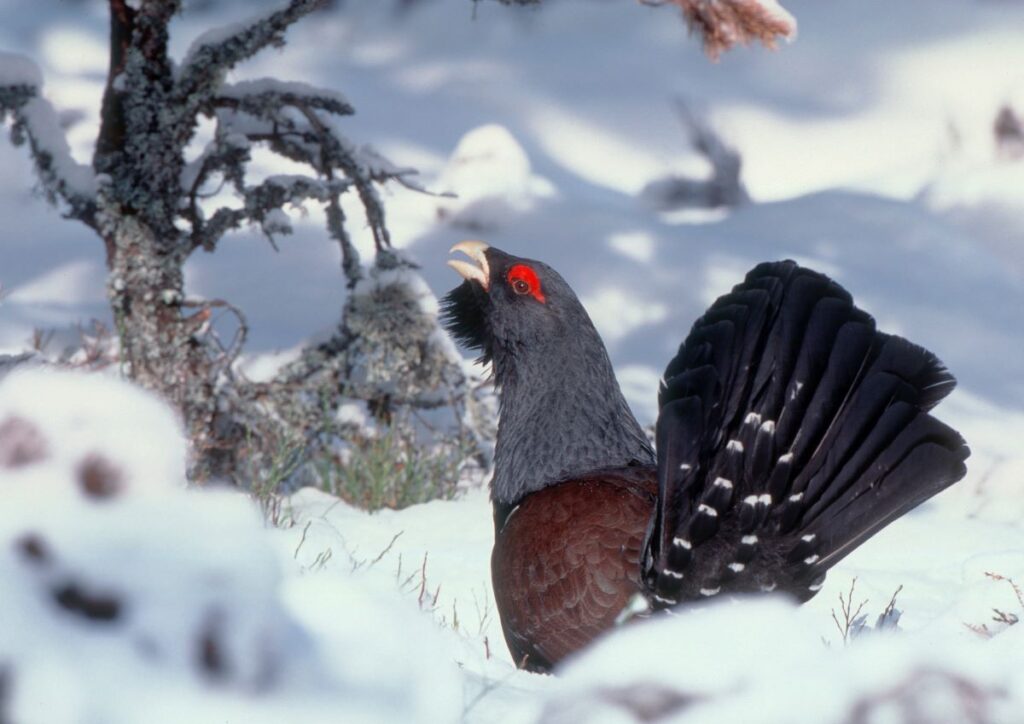
Capercaillie numbers at leks down 9% amid extinction fears
The number of male Capercaillie at leks was down nine percent amid extinction fears for the species, The Scottish Gamekeepers Association has warned.
Only 153 male birds were recorded at leks in key forests this year, 15 less than this time last year, according to the group.
They warned should the decline continue, it would result in an estimated further decline of 43% in Capercaillie numbers by the time the next national survey is undertaken in 2027/28, on top of a 50% decline in the previous one.
Land managers say predators such as foxes and crows, which can legally be controlled, are impacting breeding success as are rising populations of protected pine marten, badgers and goshawks.
Instead of controlling foxes and crows, many land managers within the Scottish capercaillie range have been encouraged to choose the diversionary feeding of predators.
While research on artificial nests suggested diversionary feeding has the potential to be successful, there has been no recovery in Capercaillie numbers as a result, SGA said.
‘When working in these forests every day, we have been involved with populations of Capercaillie all of our lives,’ said one group practitioner and member of SGA.
‘We’ve witnessed this dramatic decline with our own eyes and feel compelled to inform the public of the current situation.
‘Sadly, everything we said in the past has been borne out in the recent counts. The numbers don’t lie.
‘The last chance, therefore, is for the public to know the facts, with no spin.
‘Maybe it is only through the public knowing what is happening, and asking questions, that we can save the Capercaillie. That is all we want; that people know the truth.
‘By making a plea to the public, maybe a bigger discussion outside of Capercaillie circles can begin, and we can get to the solutions the bird needs to remain here.’
Read more Wildlife stories here.
Subscribe to read the latest issue of Scottish Field.
TAGS

